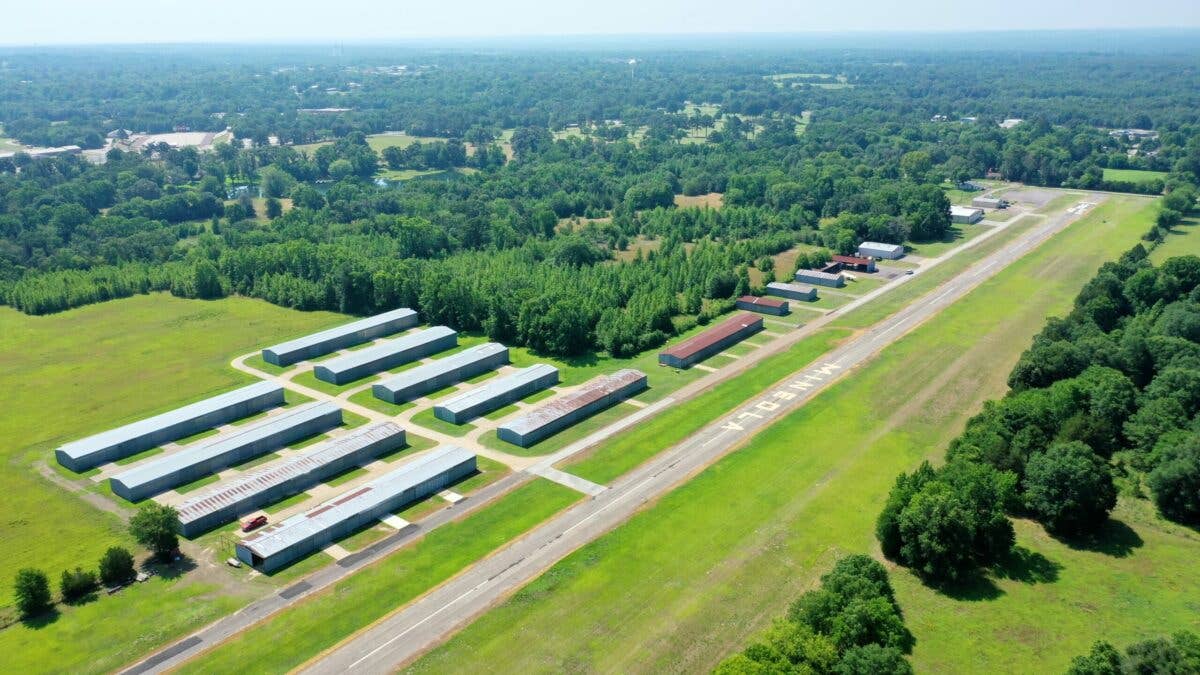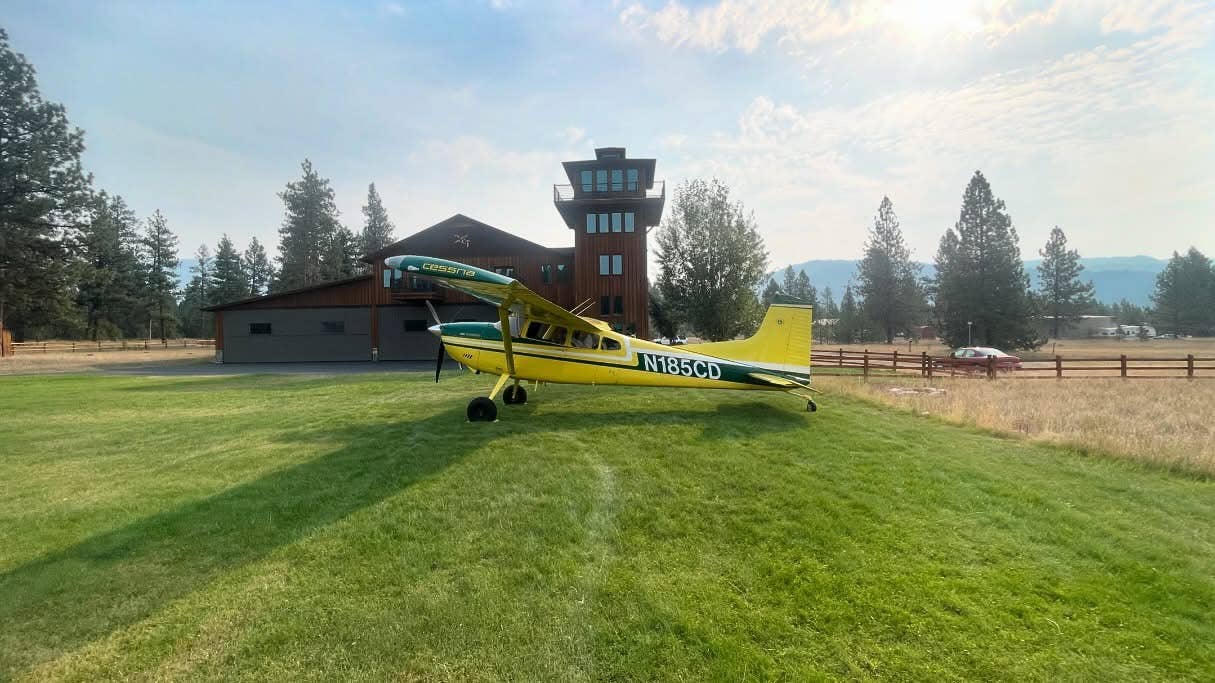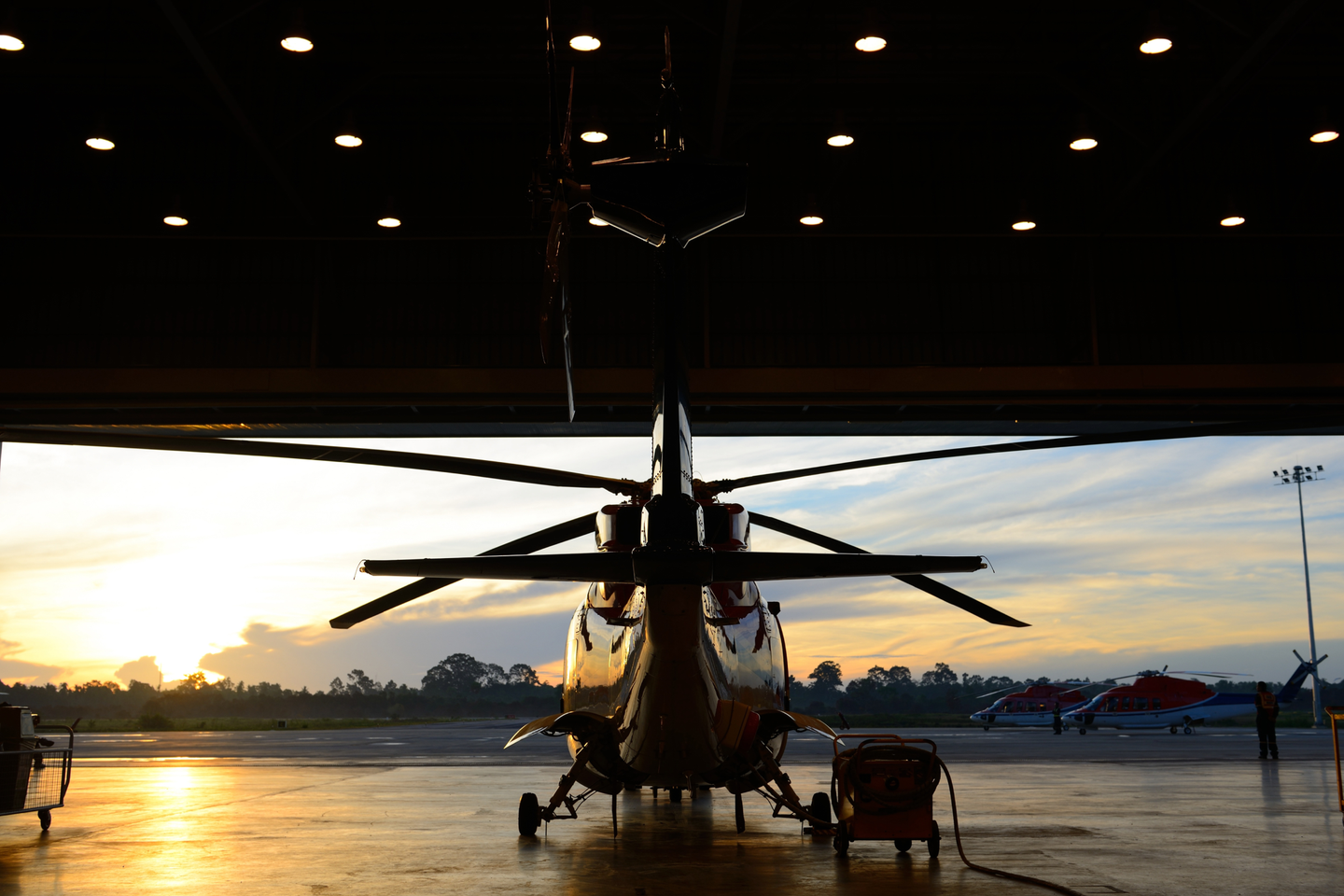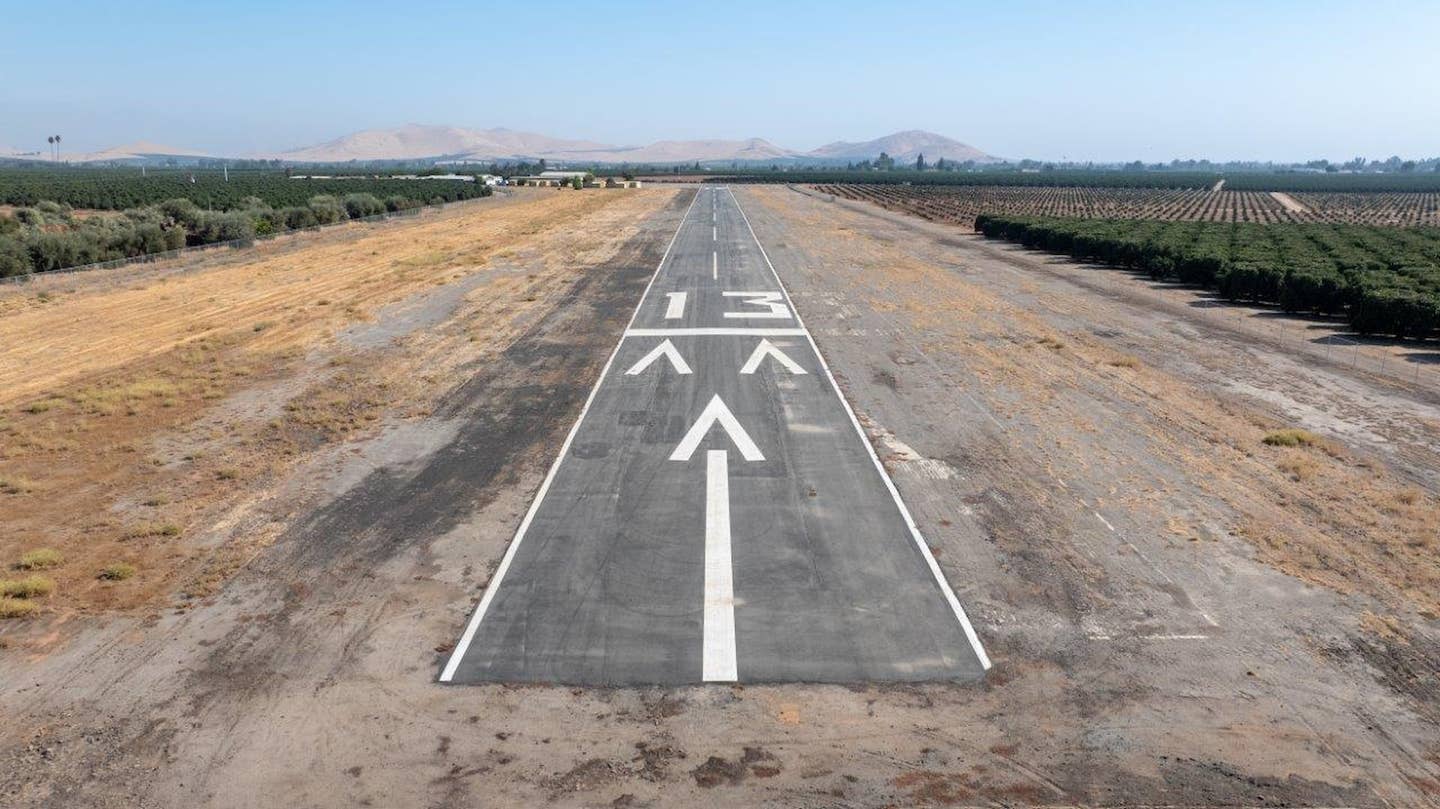Looking Back, Looking Ahead: Mineola-Wisener Field Airport
The airport, which is more than 100 years old, hosted barnstormers and has a circa-1920s beacon tower that still operates at night.

Mineola-Wisener Field Airport (3F9) has 18 rows of hangars, with around a hundred based aircraft. [Courtesy: Mineola-Wisener Field Airport]
A look at Mineola-Wisener Field Airport’s current state is best done by first working to understand its past. Most important to note about the airport’s history is its longevity. Clocking in at 106 years old in 2023, 3F9 holds the distinction of being one of the oldest privately-owned, public-use airports in the country. It is believed to be the oldest airport of its type in Texas, noted its manager, Lupita Wisener.
“There is so much history that took place here at the airport. It was first established as an emergency landing field for Love Field in Dallas. After World War I ended in 1919, several other emergency landing fields had been established and closed, but this one remained in operation. So, there were military planes that came through here, as well as barnstormers. That is one of the unique features of this airport. Wiley Post visited here quite often because his family was just west of here, and a lot of dignitaries have come through here over the years.”
Almost the entirety of the airport’s lineage has occurred with the Wisener family at the helm, Wisner explained. She’s been in charge of the airport since 2012, at which point her husband inherited the airport from his father—who had long managed it. She provided a brief overview of what the airport is like today.
“We must have about 18 hangar rows here and house about a hundred aircraft, although a lot of them are hangar queens, unfortunately. Of those, we have experimentals, ultralights, single engines, and we also have multi engines. We also have an Experimental Aircraft Association chapter, Chapter 1475, which we share with Wood County Airport (KJDD) that’s five miles north of here. There’s always something going on at Mineola-Wisener,” she said.
Not only are there stories shared amongst pilots who have fond memories at the airfield, there are physical mementos onfield as well. These help to serve as reminders of the airport’s past.
“This airport is unique foremost because of its rich heritage and history. It’s a throwback to the old days,” Wisener continued. “We still have a circa-1920s beacon tower and beacon that operates at night. It is one of the original beacons that was put out by the Department of Commerce. This is probably my favorite artifact at the airport—I’m fascinated with it. We also have a museum based here. It’s called the Royal Flying Circus Aviation Museum. That museum has an original Curtiss Jenny, exhibited as it was, and it has not been restored. The cloth has worn away, so you can see all of the woodwork of the plane, and she’s in great shape at 105 years old!”
Pilots can see this aircraft as well as a Stearman biplane and other odes to the golden age of aviation by appointment during weekday business hours.
Even with a lengthy track record of successful year-over-year operations, it’s no small task to keep an airport operational for generations. This is especially true when considering the strong headwinds that privately owned airports face in the 21st century.
“And, of course, the costs of managing the airport are horrific. The Covid-19 pandemic and its aftereffects, with the way the economy is, it has been very difficult to find consistent people to work,” Wisener said. “The costs overall have also all gone up and are astronomical, so it’s a really tough time for us. It’s something else. In Texas, there are some provisions that help with property taxes though, so we are going to look into that. But with the real estate boom around here, it’s boosting values quite a bit.”
Even with these headwinds, Wisener is extremely optimistic for the airport’s future. Its current popularity amongst pilots in Texas and beyond is just one indicator of the years to come.
“We are going to invest in redoing the runway with asphalt, which the cost of has been high,” she said. “That’s been one of our issues, and that’s something that we are working through how to do. We have that planned for the near future and are exploring methods to obtain financing so that we can complete that project. Of course, the grass runway is alright; we just need to keep mowing it! But the price of gas has doubled, even though the refinery is only 20 miles away in Tyler. That, too, has been an interesting aspect of managing the airport recently.”
Wisener referenced the family’s resiliency and doggedness as reasons why the property will long be an airport. “For the next 100 years of the airport’s future, we will see how expenses, property taxes, and other factors affect us. But we are going to keep going as long as we can, and I expect that someone in the Wisener family will continue running the airport," she said. "My husband’s only son plans to continue operating the airport, so it will keep going.”

Sign-up for newsletters & special offers!
Get the latest FLYING stories & special offers delivered directly to your inbox






